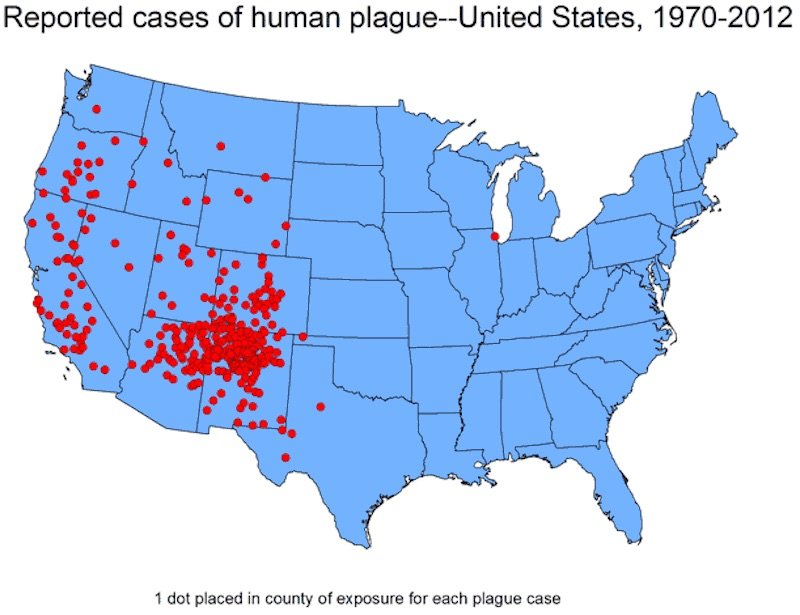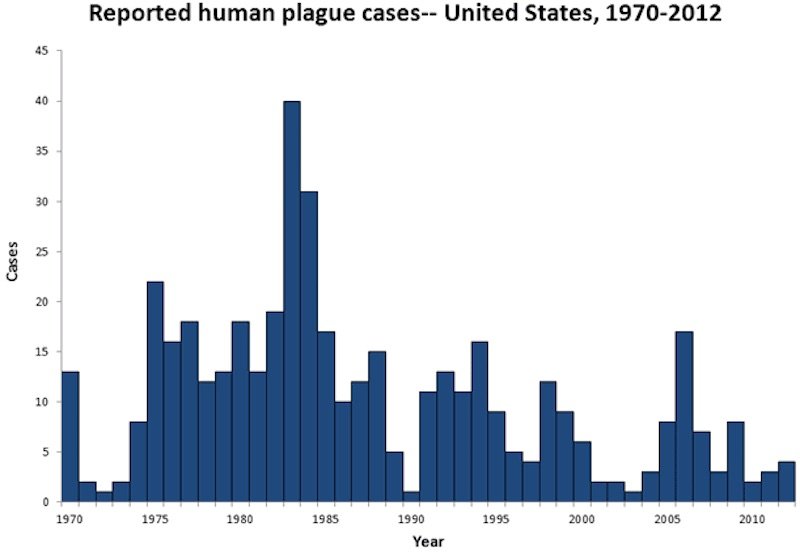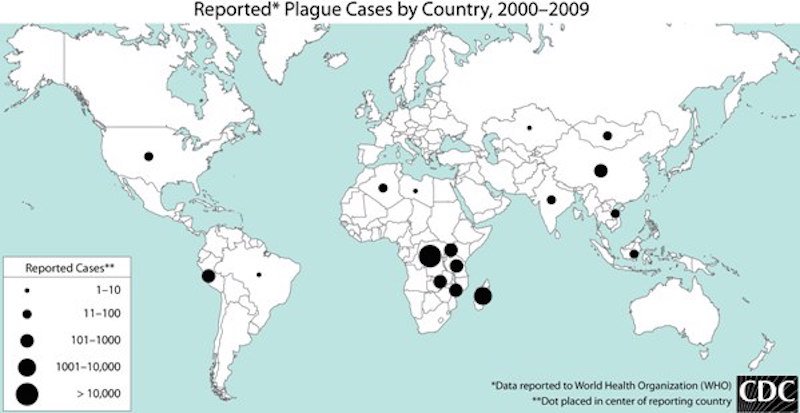Also known as the Black Death, this is the same bacterium (Yersinia pestis) that wiped out millions of people in the 14th century. While the disease is rare in the U.S., it's not defunct. On average, we'll see seven cases per year:
The reason for the 1983 spike you see in the chart above could have been a result of cool moist weather in the western US, which may have allowed fleas to survive for longer and extended the length of the plague season in some areas.
You can get infected from a flea bite or contact with infected tissues or fluids from handling an animal — such as a squirrel, chipmunk, or other rodent — that is sick with or died from the disease. You can also get it from inhaling droplets in the breath of infected cats or humans.
Most of the cases tend to crop up in the rural West, especially in southern Colorado, northern New Mexico, northern Arizona, California, southern Oregon, and western Nevada — places that rodents that carry the disease call home.
Comment: Rodents probably had very little to do with the spread of the Black Death. There is a growing body of evidence that the plague has a cosmic connection:
An infection causes flu-like symptoms such as high fever, chills, nausea, weakness and swollen lymph nodes in the neck, armpit, or groin.
There are 3 different kinds of infection: bubonic, septicaemic, and pneumonic. Bubonic plague, the most common form in humans, infects the lymph nodes, septicaemic plague infects the bloodstream, and pneumonic plague infects the lungs.
All forms are treatable with antibiotics. But if left untreated, the bubonic form of the disease is fatal in 50% to 60% of cases, and the other forms are almost always fatal if they aren't treated, according to the World Health Organization.
Plague is still a problem in many parts of the world including many countries in Africa, the former Soviet Union, the Americas, and Asia, but the worst plague outbreaks in recent years have been in Madagascar, the Democratic Republic of Congo and Peru.
Between 1,000 and 2,000 cases of plague globally are reported each year to the WHO, but the number of cases that go unreported is likely much larger.






Comment: See also: